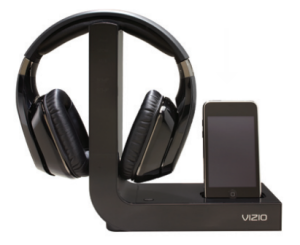Wireless Noise Cancelling Headphones Buyers Guide
by Sound Maestro
Headphones have advanced with time same way other areas of technology and electronics have experienced tremendous changes. In this digital era, as major devices are going miniature, wireless/cordless devices are fast rising in popularity. When buying a wireless noise cancelling headphones, you will be spoiled with options. Noise cancelling headphones come in different shape, sizes and form factor. Over-the-head, in-ear, foldable, compact fast, wireless, wireless with microphone are money numerous feature that come packed in this noise cancelling headphone.
 Making a pick for the best wireless noise cancelling headphones shouldn’t be difficult if you are checking out the right things. These headphones usually operate wirelessly in two ways, Bluetooth or Radio Frequency (RF).
Making a pick for the best wireless noise cancelling headphones shouldn’t be difficult if you are checking out the right things. These headphones usually operate wirelessly in two ways, Bluetooth or Radio Frequency (RF).
There are some major factors that determine the efficiency of a wireless headphone. In this buyers guide we will elaborate major elements of a wireless noise cancelling headphones.
Key Buying Factors of Wireless Noise Cancelling Headphones
Receiving Range
Wireless headphones operate within ranges. This could be range from the Bluetooth music device or the RF transmitter that comes with the headphones. When out of range, there could be either a complete signal/sound loss or distortion. Average range for wireless headphones using Bluetooth is 10 – 50 meters. When using a RF transmitter you have more distance radius of up to about 100 meters of non-distorted connection.
Battery Life
Wireless headphones gives you a lot of freedom from you music device. You are not limited to the length of your cables and this comes at a price. Noise cancelling headphones uses batteries to power the active noise cancellation device embedded in the ear cup. Also, the wireless connectivity takes an amount of battery power. You want to be sure the wireless headphones you are buying gives enough battery power to suit your needs. Average battery life of a noise cancelling headphone is about 20 hours of continuous use. This best noise cancelling headphones interactive comparison chart shows details of leading noise cancelling headphones.
Bluetooth vs. Radio Frequency (RF)
As similar as these two might be, they somehow work and affect users in different ways. A Bluetooth noise cancelling headphone is paired to a Bluetooth enabled device. In other to use a Bluetooth wireless noise cancelling headphone, your music or video device must be Bluetooth enable to be paired with these headphones. With this, you can have both your headphones and portable music device on the move.
On the other hand, radio frequency noise cancelling headphones do not require any specific feature from the music device expect an audio connection to a RF dock that comes with the headphone. For instance, you can connect your TV to the RF dock which in turn is connected to the headphones so while playing a movie on TV you can walk around the house with the wireless noise cancelling headphones not missing any word. The con is this takes away some level of portability or mobility depending on how you see it. Because it requires connection to an RF dock, this is not your headphone of choice for a late evening walk.
Noise cancelling headphones are a great device to have. Given that they block out ambient noise from getting into the ear cup, having a wireless device of this sort adds more to the advantages of this devices. Several Bose QC15 Review shows that Bose has one of the best noise cancelling feature but they are yet to make any of these headphones wireless, so we just might have to continue to wait.